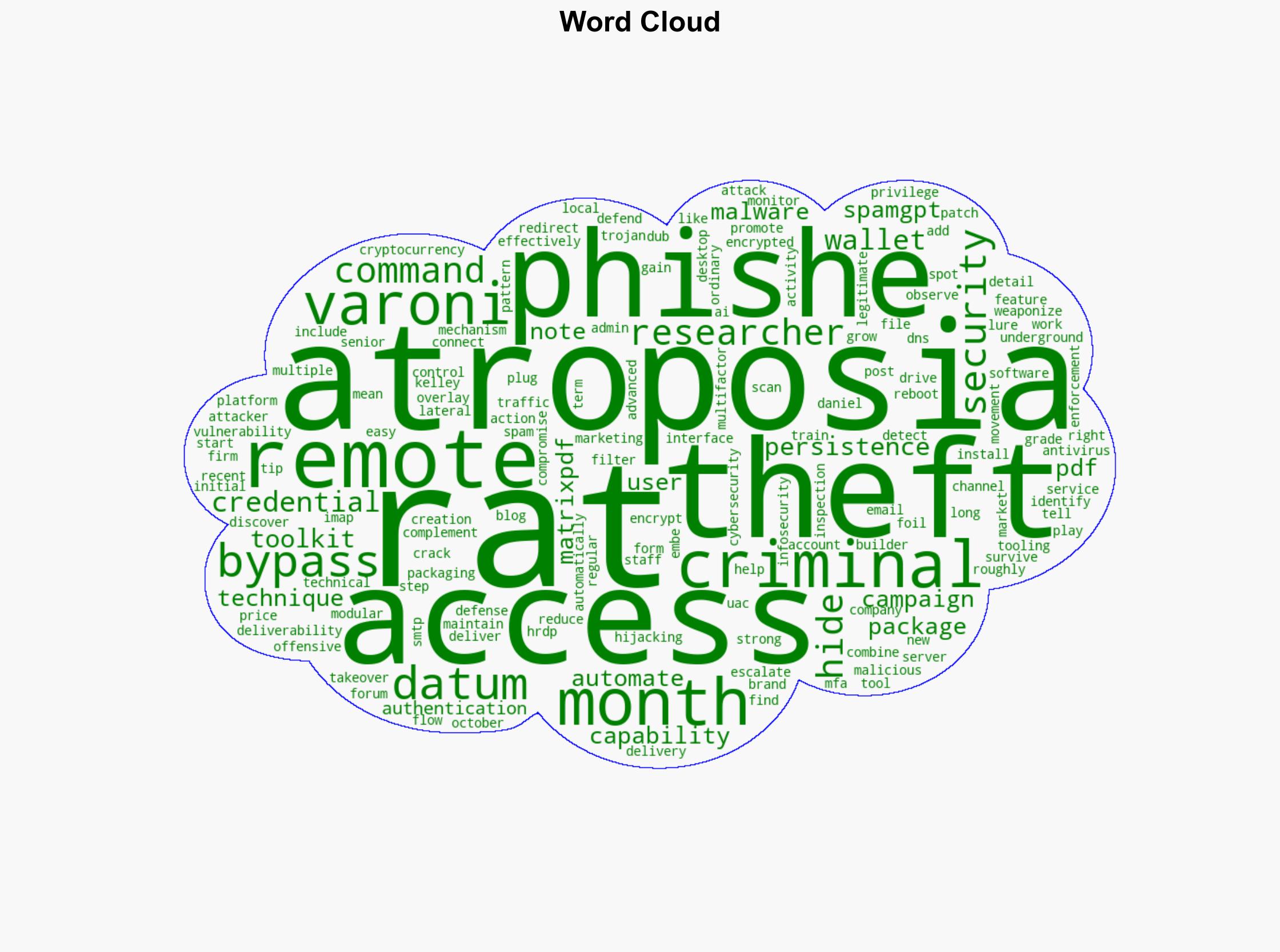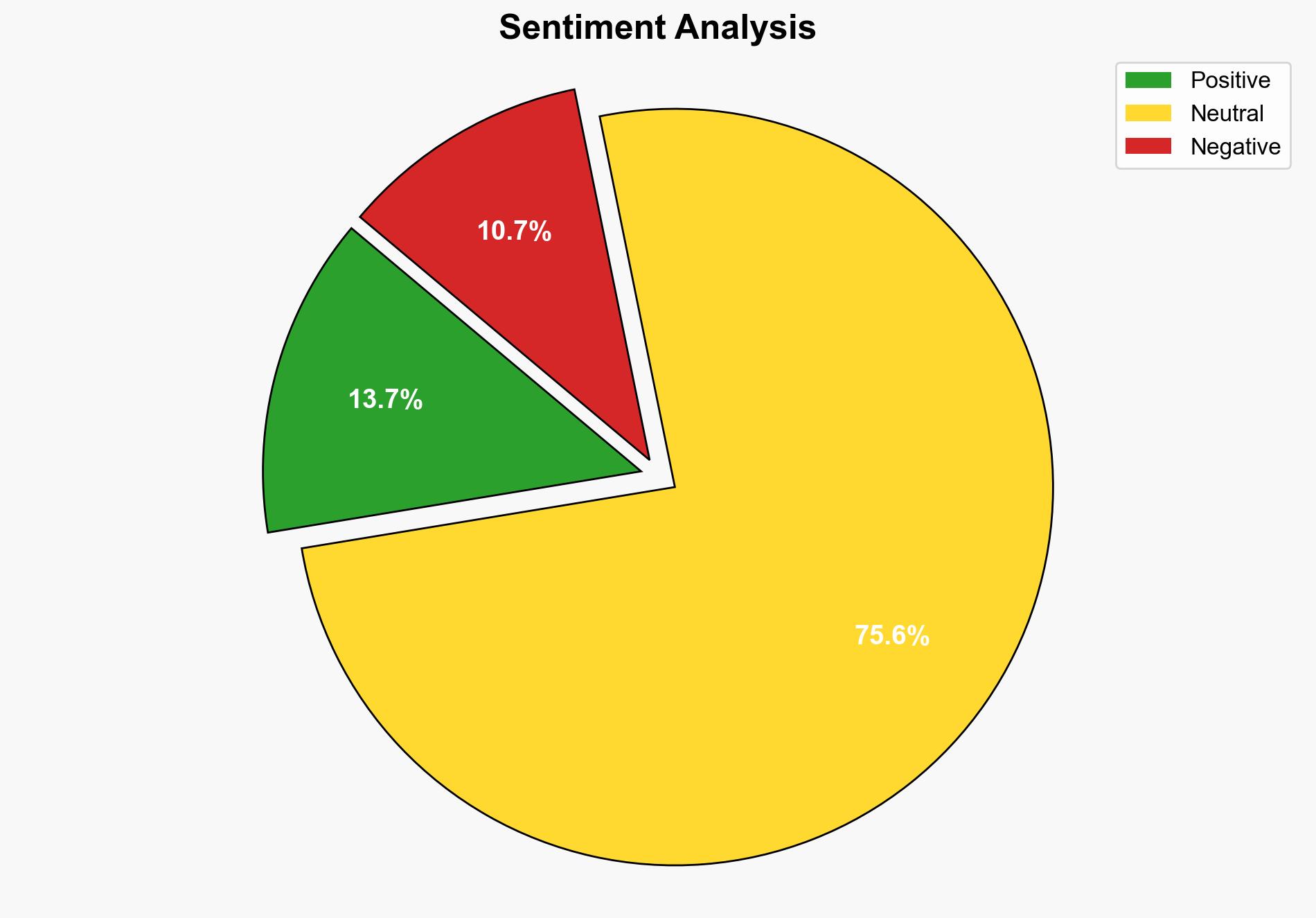New Atroposia RAT Surfaces on Dark Web – Infosecurity Magazine
Published on: 2025-10-29
Intelligence Report: New Atroposia RAT Surfaces on Dark Web – Infosecurity Magazine
1. BLUF (Bottom Line Up Front)
The Atroposia RAT represents a significant threat due to its modular design and advanced evasion techniques, posing a high risk to cybersecurity. The most supported hypothesis is that Atroposia is primarily developed and marketed for cybercriminal activities targeting financial and personal data theft. Confidence level: High. Recommended action: Enhance phishing defenses, enforce multi-factor authentication, and monitor for unusual authentication patterns.
2. Competing Hypotheses
Hypothesis 1: Atroposia RAT is primarily designed for cybercriminal activities, focusing on financial and credential theft, leveraging its modular capabilities and encrypted command channels to evade detection and maximize profitability.
Hypothesis 2: Atroposia RAT is a state-sponsored tool aimed at espionage, using its advanced features to infiltrate and maintain persistence within high-value targets, such as government or corporate networks, for intelligence gathering.
Using the Analysis of Competing Hypotheses (ACH) method, Hypothesis 1 is better supported due to the RAT’s marketing on underground forums and its integration with criminal toolkits like SpamGPT and MatrixPDF, which are typically associated with financially motivated cybercrime.
3. Key Assumptions and Red Flags
Assumptions:
– The presence of Atroposia on underground forums implies criminal intent.
– The integration with tools like SpamGPT suggests a focus on phishing and financial theft.
Red Flags:
– Lack of direct evidence linking Atroposia to specific criminal groups.
– Potential for state actors to use similar platforms for covert operations.
4. Implications and Strategic Risks
The proliferation of Atroposia RAT could lead to increased financial losses and data breaches across sectors. Its advanced evasion techniques may challenge existing cybersecurity defenses, potentially escalating into broader economic and reputational damage for affected organizations. The tool’s modularity suggests potential for rapid adaptation to exploit emerging vulnerabilities.
5. Recommendations and Outlook
- Enhance phishing defenses and user training to reduce initial access vectors.
- Implement robust multi-factor authentication to mitigate unauthorized access.
- Monitor network traffic for anomalies indicative of RAT activity.
- Scenario Projections:
- Best Case: Rapid identification and patching of vulnerabilities reduce Atroposia’s impact.
- Worst Case: Widespread adoption of Atroposia leads to significant data breaches and financial losses.
- Most Likely: Continued use in targeted attacks on financial institutions and high-value corporate targets.
6. Key Individuals and Entities
Daniel Kelley is noted for his insights into the Atroposia RAT’s capabilities and defensive measures.
7. Thematic Tags
national security threats, cybersecurity, counter-terrorism, regional focus




